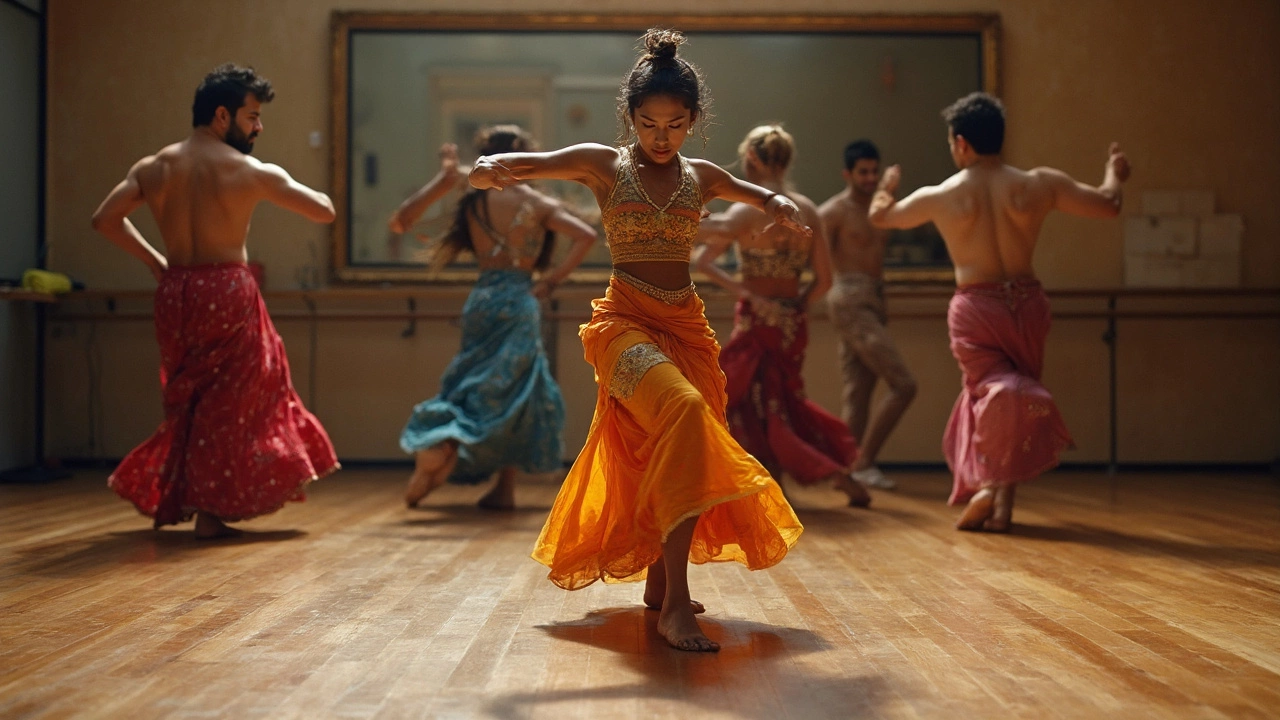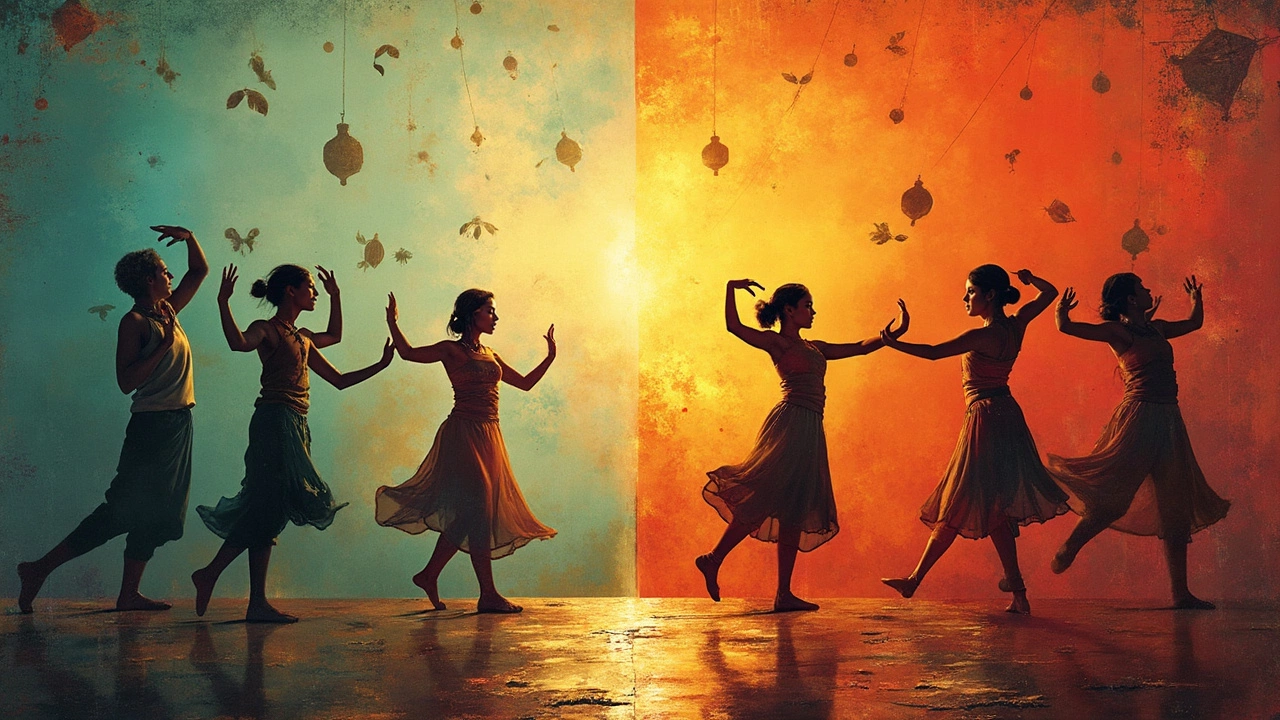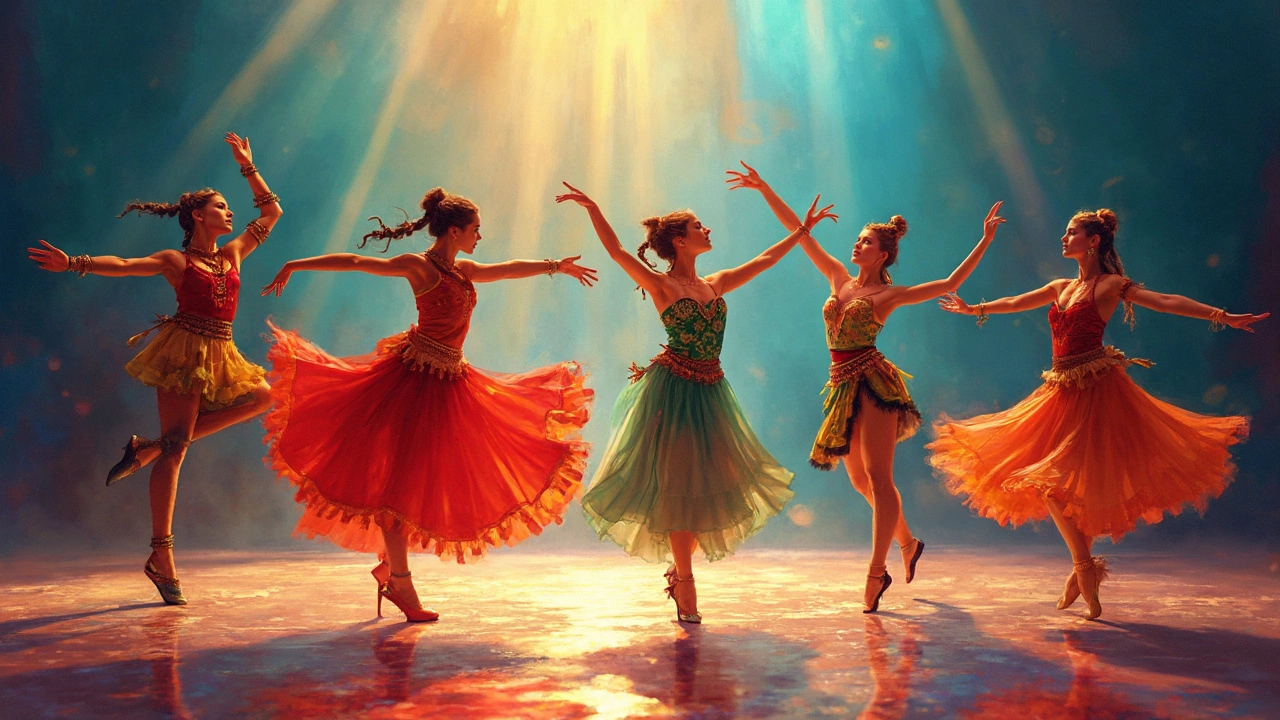Ever tried to copy a dancer’s wild footwork on YouTube and nearly twisted your ankle? That’s just a taste of what you’re in for with some regional dance styles. We’re talking spins that make you dizzy, steps that feel way too fast, and routines that mess with your head and your muscles. Thing is, not all dances are created equal—some seem next to impossible to master if you’re not born into them.
You’ll find dances where even the basics are a workout, and it isn’t just about having rhythm. Think folk dances that demand crazy coordination, balance, and memory, often with traditions going back centuries. Every move might look joyful, but mess up a step and you’re out of sync with the beat—and maybe the group. If you want a taste of what makes a dance ‘hard,’ you’ve got to dig into what’s really going on behind those sharp steps and tight formations.
- Defining ‘Hardest’: What Makes a Dance Difficult?
- Folk Dances That Test Your Limits
- Tricky Regional Rhythms and Footwork
- Mental and Physical Roadblocks
- Tips to Survive the World’s Toughest Dances
Defining ‘Hardest’: What Makes a Dance Difficult?
What actually makes a hardest dance so tough to learn? It’s not just doing the moves fast, or how fancy you look on the floor. There’s a bunch of things at play. Some dances have steps that defy your muscle memory. Others speed things up until you feel like your feet might trip you up for good. Then there’s rhythm—some regional dance forms use odd time signatures that don’t follow the usual 1-2-3 beats you hear on the radio. Try dancing to a 7/8 rhythm like in Balkan folk and your head starts spinning before your legs even move.
Many regional dances also mix in tricks that aren’t about the feet at all. Think crazy jumps, deep squats (like in Russian Kalinka), fast spins (like in Indian Kathak), or balancing stuff on your head while you move. The whole package tests your stamina, coordination, and memory. Some dances like Irish step—even beginners agree—it’s wild how stiff you have to keep your upper body while your feet blur like cartoon characters.
- Technical moves: Steps that only make sense after weeks of practice, like fast toe hops or sharp body turns.
- Complex rhythms: Forget standard pop. Many regional styles use uneven rhythms and group claps that throw off new dancers quickly.
- Endurance: Some routines last several minutes at full speed—a real leg burner. Kalinka's knee bends or Flamenco’s heel stomps are no joke.
- Tradition: A few dances have set gestures that you can’t just make up on the spot. If you miss one, the whole group sees it.
Here’s a quick breakdown comparing just how demanding some famous dance difficulty factors are:
| Dance Style | Main Difficulty | Typical Speed | Special Requirement |
|---|---|---|---|
| Irish Step | Footwork Precision | Fast | Stiff Upper Body |
| Balkan Folk | Odd Time Signature | Medium-Fast | Group Sync |
| Russian Kalinka | Knee Bends, Jumps | Fast | Strength & Stamina |
| Indian Kathak | Spins | Very Fast | Spotting |
So, the next time someone asks, “what’s the hardest dance to learn?”—it’s not about just one thing. It’s a combo of physical, mental, and even cultural challenges that take most people far outside their comfort zones.
Folk Dances That Test Your Limits
People often think regional dance is all simple steps in a circle, but that’s just not true. Some of these hardest dance styles take athletic skill and guts. Try Tinikling from the Philippines, for example. You’re basically jumping in and out of fast-moving bamboo poles, risking your toes every second. Miss just one beat, and you get a real (painful) lesson.
Then there’s Ukrainian Hopak. It looks fun with all the squats and high kicks, but it’s brutal. You need strong legs, balance like a gymnast, and perfect timing with your crew. The Hopak is actually called the ‘dance of the brave,’ and for good reason—it was built by Cossack warriors showing off in fierce competitions. If you don’t squat low enough or jump high enough, you’re just faking it.
Irish Stepdance shoots up the difficulty too. A full performance can easily last five minutes at a breakneck pace. You’ve got to keep your arms stiff and still, while your legs move in crazy patterns, basically floating above the floor. The World Irish Dance Championships see kids as young as 10 pulling off steps most adults can’t keep up with.
And don’t forget Indian Kathakali. Dancers train years just to hold the poses without shaking, while their faces tell complex stories. The footwork is intense, and you have to match the drums exactly, or the whole performance falls apart. It’s a full-body workout with eye muscles included—seriously, you have to move your eyes in rhythm with the music!
Wondering how they stack up? Here’s a quick look:
| Dance | Main Challenge | Skill Needed |
|---|---|---|
| Tinikling | Avoiding bamboo poles | Agility |
| Hopak | Explosive jumps/squats | Leg strength, timing |
| Irish Stepdance | Fast, precise footwork | Balance, memory |
| Kathakali | Storytelling+footwork+face | Stamina, facial control |
These traditional dance forms aren’t just about looking good for the crowd—they’re survival of the fittest. If you want to learn them, expect sore muscles and a load of respect for the folks who grew up doing them.

Tricky Regional Rhythms and Footwork
When you dig into regional dance styles, the real curveballs usually come from their wild rhythms and insane footwork. Take Irish step dancing, for example—it looks cool and tidy up top, but your legs have to hammer out beats like a drumline. Some professional shows speed up to 120 beats per minute, so keeping up is brutal. It’s not just about fast feet, though. Indian Kathak dancers use complex 16-beat cycles that don’t match any chart-topping pop songs you’ll hear on the radio. Miss a count, and you’ll get totally lost.
Flamenco from Spain isn’t any easier. Its signature rhythm, the "compás," uses a 12-count loop. Dancers have to feel their way through claps, boot-stomps, and finger snaps while keeping a sharp posture. If you lose the compás, it’s like trying to play soccer on ice—everything falls apart. Argentine Malambo raises the bar even higher, with lightning-fast foot tapping and syncopated rhythms that even rhythm pros mess up. There’s a reason why it’s usually a men’s solo dance; it’s basically a test of stamina and control.
Some styles even have battle rounds that crank up the difficulty. Ukrainian Hopak throws in high jumps, knee spins, and moves that push your legs past what seems possible. Dancers have to hit their steps perfectly while keeping up with everyone else, which means one weak move sticks out.
Here’s a quick look at how the footwork compares in some of the hardest regional dance styles:
| Dance Style | Known For | Footwork Speed |
|---|---|---|
| Irish Step Dance | Precise, fast kicks & crosses | Very High |
| Flamenco | Stomps & syncopation | High |
| Malambo | Rapid zapateo (foot tapping) | Extreme |
| Kathak (India) | Spins & 16-beat cycles | High |
| Hopak (Ukraine) | Jumps, squats, spins | Varies, but often intense |
If you want to take on a hardest dance, expect your brain to work as hard as your body. Learning the timings and patterns by ear (sometimes with live musicians) makes it even more challenging. The footwork itself might not look wild from the sidelines, but get on the dance floor and you’ll feel every missed step in your calves and pride.
Mental and Physical Roadblocks
Diving into the hardest dance styles, you can’t ignore how much they mess with your mind and test your limits physically. Folk and regional dances throw in patterns that aren’t always logical—it’s not just ‘left foot, right foot.’ You might get random direction changes, super-precise foot placement, and even specific facial expressions on top of the moves. It’s no wonder even experienced dancers get tripped up.
Here’s the thing: mastering regional dance forms means dealing with both brain overload and body fatigue. Take Irish stepdance, for example. Your upper body stays stiff while your legs are flying in a blur. Or look at Russian Hopak—dozens of squats, kicks, and spins back-to-back. Your leg muscles will hate you if you aren’t ready. Mentally, you have to memorize dozens of steps that change fast. And group dances add peer pressure—one mistake and you mess up the whole line.
You also need to handle local rhythms. In Balkan circle dances like the Kolo, the beat can be in 7/8 or 9/8 time, which isn’t what you hear on the radio. Counting is a full-time job just to stay in sync.
Here’s a quick breakdown of what usually trips dancers up:
- Unusual rhythms: Regional patterns like 6/8, 7/8, or odd syncopation can feel strange at first.
- Physical stamina: Fast, exact steps and jumps (think Georgian or Bhangra) need strong legs and lungs.
- Memory load: Many routines have ten, twenty, or more moves—every step counts.
- Group precision: Screw up and everyone notices, especially in synchronized dances.
- Facial and body expression: Some dances want fixed expressions or sharp head movements at the same time.
Check out this quick snapshot of what’s needed for some of the hardest dance forms:
| Dance Style | Main Physical Challenge | Main Mental Challenge |
|---|---|---|
| Irish Stepdance | Leg Speed/Stamina | Memory for fast step changes |
| Russian Hopak | Squats & Kicks | Combination memorization |
| Balkan Kolo | Endurance in long sets | Odd rhythm counting |
| Georgian | Explosive jumps | Timing with music cues |
If you’re aiming to ace any of these hardest dance styles, it pays to cross-train and build muscle memory. Count your steps, practice counting odd beats, and get comfortable making mistakes—because there will be plenty at the start. The real skill isn’t just learning the moves, but keeping your brain and body locked in at the same time.

Tips to Survive the World’s Toughest Dances
If you’re going all-in on learning the hardest dance styles, you need to be smart about it. These aren't just your average two-step routines. The good news is, a few real-world tricks can keep you moving instead of sitting the next round out with sore muscles.
- Break Down the Basics: Start by drilling foundational steps. For example, with Hungarian Csárdás, nailing the quick
